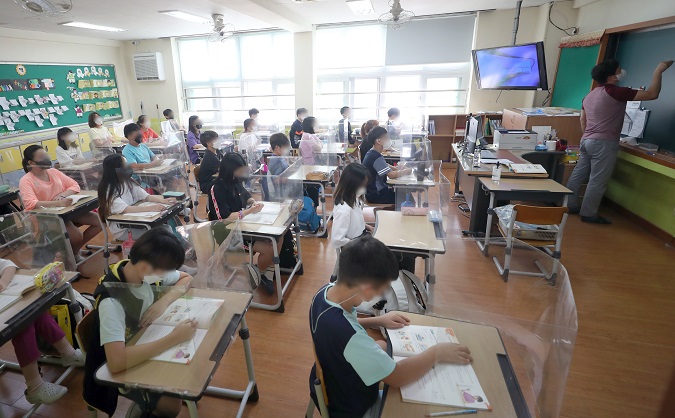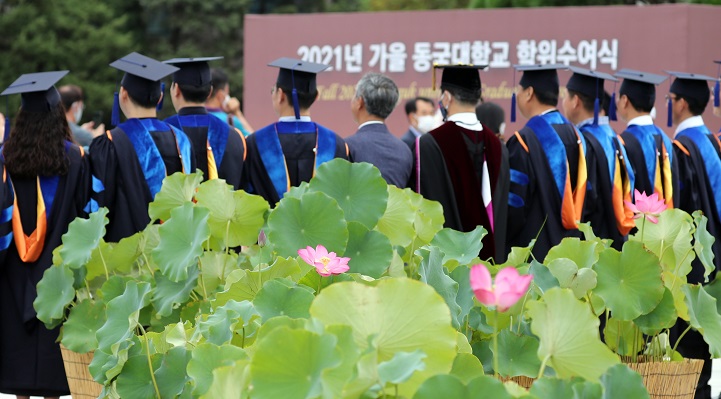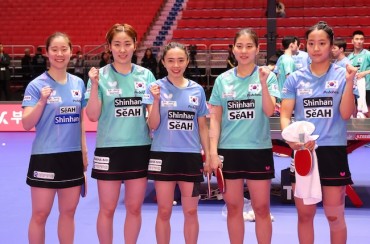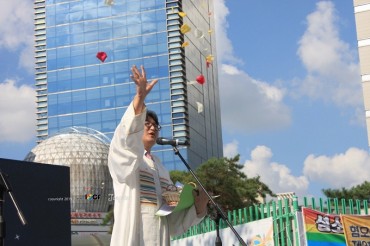
This Sept. 8, 2021, file photo shows an elementary school class in Gimhae, about 450 kilometers southeast of Seoul. (Yonhap)
SEOUL, Sept. 17 (Korea Bizwire) — South Korea has larger class sizes and lower employment rates among the highly educated than Organization for Economic Cooperation and Development (OECD) averages, the education ministry said Friday.
According to the latest edition of the OECD’s “Education at a Glance,” released by the Ministry of Education, elementary and middle school classes had an average of 23 and 26.1 students, respectively, in 2019.
The figures were lower than 23.1 and 26.7 from 2018 but still higher than the OECD average of 21.1 for an elementary school class and 23.3 for a middle school class.
The number of students per teacher was smaller than the OECD average at 13 in middle schools and 11.4 in high schools. The OECD average was 13.1 and 13, respectively.
Elementary school teachers, however, had to manage 16.6 children each, higher than the OECD average of 14.5.
The report also showed in 2020, Korea had the highest rate of young adults, ages 25-34, with college degrees at 69.8 percent, higher than the OECD average of 45.5 percent.
The corresponding rate for people aged between 25 and 64 was 50.7 percent, also above the OECD average of 40.3 percent.
The employment rate of those who graduated from community colleges and universities, however, was lower than the OECD average of 81 percent and 83.1 percent, respectively.
Only 76.1 percent and 76.3 percent of community college and university graduates here had jobs and their relative wages were lower than the OECD average.
In terms of public education funding, the report showed the South Korean government took a lesser financial burden than other OECD nations.
Students here spent US$12,914 on average in public education in 2018, about US$1,200 more than the OECD average. The ministry said it was because high school education became free here only this year.
The government covered 73.6 percent of the country’s total public education spending, lower than the OECD average of 82.4 percent.
In terms of tuition, Seoul ranked No. 8 in public universities and No. 7 in private ones.
(Yonhap)







